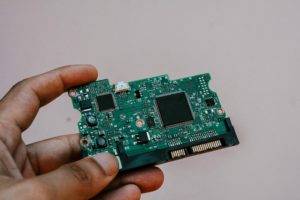
Firmware Essentials and Why It Matters for Your Devices
Welcome to this Edition of GBX Tech Insights!
In this latest edition of GBX Tech Insights, we’re diving into a key topic in electronics development—firmware. If you’ve ever wondered what makes your devices run seamlessly and securely, firmware is at the heart of it. In this edition, you’ll learn what firmware is, how it differs from other types of software, and why keeping it up-to-date is essential for performance and security.
Exploring Firmware: The Backbone of Device Functionality
Firmware, often referred to as “embedded software,” is a specialized program coded into electronic devices, providing essential instructions for hardware functionality. Acting as a bridge between hardware and higher-level software, firmware allows electronic devices to perform basic operations, communicate with other system components, and offer users a functional experience.
What Exactly is Firmware?
Firmware is a low-level software that controls device hardware, enabling its most basic functions and powering up the operating system. It’s essential to the startup and functionality of every digital device. Think of it as the operating manual embedded within the hardware, giving it the “how-to” needed to work.
Firmware vs. Software: What’s the Difference?

While firmware and software both contain coded instructions, their purposes differ. Firmware, unlike regular software, doesn’t interact directly with the user. It’s responsible for enabling a device’s fundamental functions, while software generally facilitates user interactions and runs applications. Firmware serves as the foundational code necessary for higher-level software to function.
Additionally, while both firmware and software require updates, firmware updates are particularly critical for maintaining device security and performance. A small flaw in firmware can lead to major functionality issues, making updates essential for device integrity.
Why Firmware Updates are Important

Updating firmware is essential for modern devices, ensuring compatibility, security, and efficiency. Here’s why regular updates are crucial:
- Bug Fixes and Security Patches: Updates address bugs and vulnerabilities, protecting against cybersecurity risks.
- Performance and Stability: Keeping firmware current ensures optimized device performance and reduces the likelihood of crashes.
- Compatibility with New Tech: Firmware updates ensure that devices remain compatible with the latest technologies and operating systems.
Incorporating periodic updates enhances device stability and performance, allowing them to integrate seamlessly with advancing software and hardware technologies.
Types of Firmware

There are several types of firmware, each serving a unique purpose within devices:
- Low-Level Firmware: Integrated deeply with hardware, often stored in ROM or PROM, and challenging to modify. It provides basic device functions and operates almost as a mini operating system.
- High-Level Firmware: Stored on flash memory, this firmware is updatable and handles more complex operations than low-level firmware, contributing to a device’s versatility.
- Subsystem Firmware: Often called device firmware, this type runs independently within specific subsystems, ensuring optimal performance of specialized functions.
Firmware Security

Firmware security is critical in protecting devices from cyber threats. Hackers often target firmware vulnerabilities to gain unauthorized access, plant malware, or extract sensitive data. In IoT environments, securing firmware is paramount to prevent attacks that exploit hidden code vulnerabilities.
At GBX Technology, we’re passionate about the tech that drives today’s electronic innovations, from firmware development to the complex layers of electronic hardware. As trusted partners in hardware development, we’re excited to support your electronic projects from design to manufacturing.
Contact GBX to discuss how we can bring your next project to life, leveraging our expertise to build reliable, cutting-edge technology together.






